Experimental Machine Learning Approach for Optical Turbulence and FSO Outage Performance Modeling
Abstract
:1. Introduction
2. Atmospheric Optical Turbulence
2.1. Channel Modeling
2.2. Performance Metrics
3. Experimental Setup
4. Results
4.1. Data Analysis
4.2. Regression Analysis for Modeling
4.3. Outage Probability Calculation
4.4. DNN Classification
4.5. Modeling Outage Probability
5. Conclusions
Author Contributions
Funding
Data Availability Statement
Conflicts of Interest
References
- Young, D.W.; Hurt, H.H.; Sluz, J.E.; Juarez, J.C. Development and Demonstration of Laser Communication Systems. Johns Hopkins APL Tech. Dig. 2015, 33, 122–138. [Google Scholar]
- Garlinska, M.; Pregowska, A.; Gutowska, I.; Osial, M.; Szczepanski, J. Experimental Study of the Free Space Optics Communication System Operating in the 8–12 m Spectral Range. Electronics 2021, 10, 875. [Google Scholar] [CrossRef]
- Lionis, A.; Peppas, K.; Nistazakis, H.E.; Tsigopoulos, A.D.; Cohn, K. Experimental Performance Analysis of an Optical Communication Channel over Maritime Environment. Electronics 2020, 9, 1109. [Google Scholar] [CrossRef]
- Lionis, A.; Peppas, K.; Nistazakis, H.E.; Tsigopoulos, A.D.; Cohn, K. Statistical Modeling of Received Signal Strength for an FSO Channel over Maritime Environment. Opt. Commun. 2020, 489, 126858. [Google Scholar] [CrossRef]
- Lionis, A.; Peppas, K.; Nistazakis, E.; Tsigkopoulos, A.; Cohn, K. RSSI probability density functions comparison using Jenshen-Shannon divergence and Pearson distribution. Technologies 2021, 9, 26. [Google Scholar] [CrossRef]
- Jellen, C.; Nelson, C.; Brownell, C.; Burkhardt, J.; Oakley, M. Measurement and analysis of atmospheric optical turbulence in a near-maritime environment. IOP SciNotes 2020, 1, 024006. [Google Scholar] [CrossRef]
- Wang, H.; Li, B.; Wu, X.; Liu, C.; Hu, Z.; Xu, P. Prediction model of atmospheric refractive index structure parameter in coastal area. J. Mod. Opt. 2015, 62, 1336–1346. [Google Scholar] [CrossRef]
- Basu, S. A simple approach for estimating the refractive index structure parameter (Cn2n) profile in the atmosphere. Opt. Lett. 2015, 40, 4130–4133. [Google Scholar] [CrossRef]
- Marzano, F.S.; Mori, S.; Frezza, F.; Nocito, P.; Beleffi, G.T.; Incerti, G.; Restuccia, E.; Consalvi, F. Free-space optical high-speed link in the urban area of southern Rome: Preliminary experimental set up and channel modelling. In Proceedings of the 5th European Conference on Antennas and Propagation (EUCAP), Rome, Italy, 11–15 April 2011; pp. 2737–2741. [Google Scholar]
- Rafalimanana, A.; Giordano, C.; Ziad, A.; Aristidi, E. Prediction of atmospheric turbulence by means of WRF model for optical communications. In Proceedings of the International Conference on Space Optics—ICSO 2021, Online, 30 March–2 April 2021; Volume 11852. [Google Scholar] [CrossRef]
- Dmytryszyn, M.; Crook, M.; Sands, T. Lasers for Satellite Uplinks and Downlinks. Sci 2021, 3, 4. [Google Scholar] [CrossRef]
- Trinh, P.V.; Carrasco-Casado, A.; Okura, T.; Tsuji, H.; Kolev, D.; Shiratama, K.; Munemasa, Y.; Toyoshima, M. Experimental Channel Statistics of Drone-to-Ground Retro-Reflected FSO Links With Fine-Tracking Systems. IEEE Access 2021, 9, 137148–137164. [Google Scholar] [CrossRef]
- Mishra, P.; Sonali; Dixit, A.; Jain, V.K. Machine Learning Techniques for Channel Estimation in Free Space Optical Communication Systems. In Proceedings of the IEEE International Conference on Advanced Networks and Telecommunications Systems (ANTS), Goa, India, 16–19 December 2019; pp. 1–6. [Google Scholar] [CrossRef]
- Vorontsov, A.M.; Vorontsov, M.A.; Filimonov, G.A.; Polnau, E. Atmospheric Turbulence Study with Deep Machine Learning of Intensity Scintillation Patterns. Appl. Sci. 2020, 10, 8136. [Google Scholar] [CrossRef]
- Lohani, S.; Knutson, E.M.; Glasser, R.T. Generative machine learning for robust free-space communication. Commun. Phys. 2020, 3, 177. [Google Scholar] [CrossRef]
- CLamprecht; Bekhrad, P.; Ivanov, H.; Leitgeb, E. Modelling the Refractive Index Structure Parameter: A ResNet Approach. In Proceedings of the 2020 International Conference on Broadband Communications for Next Generation Networks and Multimedia Applications (CoBCom), Graz, Austria, 7–9 July 2020; pp. 1–4. [Google Scholar] [CrossRef]
- Wang, Y.; Basu, S. Estimation of optical turbulence in the atmospheric surface layer from routine meteorological observations: An artificial neural network approach. In Proceedings of the SPIE Optical Engineering + Applications, San Diego, CA, USA, 17–21 August 2014; Volume 9224. [Google Scholar] [CrossRef]
- Xiong, W.; Wang, P.; Cheng, M.; Liu, J.; He, Y.; Zhou, X.; Xiao, J.; Li, Y.; Chen, S.; Fan, D. Convolutional Neural Network Based Atmospheric Turbulence Compensation for Optical Orbital Angular Momentum Multiplexing. J. Lightwave Technol. 2020, 38, 1712–1721. [Google Scholar] [CrossRef]
- Vint, D.; Di Caterina, G.; Soraghan, J.; Lamb, R.; Humphreys, D. Analysis of deep learning architectures for turbulence mitigation in long-range imagery. In Proceedings of the SPIE Security + Defence, Online, 21–25 September 2020; Volume 11543. [Google Scholar] [CrossRef]
- Amirabadi, M.A. A survey on machine learning for optical communication [machine learning view]. arXiv 2019, arXiv:1909.05148. [Google Scholar]
- Lionis, A.; Peppas, K.; Nistazakis, H.E.; Tsigopoulos, A.; Cohn, K.; Zagouras, A. Using Machine Learning Algorithms for Accurate Received Optical Power Prediction of an FSO Link over a Maritime Environment. Photonics 2021, 8, 212. [Google Scholar] [CrossRef]
- Andrews, L.C.; Phillips, R.L.; Hopen, C.Y. Laser Beam Scintillation with Applications, 2nd ed.; SPIE Optical Engineering Press: Bellingham, WA, USA, 2001. [Google Scholar]
- Kaushal, H.; Jain, V.K.; Kar, S. Free-Space Optical Channel Models. In Free Space Optical Communication; Optical Networks; Springer: New Delhi, India, 2017; pp. 41–89. [Google Scholar] [CrossRef]
- Nistazakis, H.; Katsis, A.; Tombras, G. On the Reliability and Performance of FSO and Hybrid FSO Communication Systems over Turbulent Channels. In Turbulence: Theory, Types and Simulation; Grove Press: New York, NY, USA, 2012. [Google Scholar]
- Prudnikov, A.P.; Brychcov, Y.A.; Marichev, O.I. Integrals and Series Volume 3: More Special Functions, 1st ed.; Gordon and Breach Science Publisher: Philadelphia, PA, USA, 1986. [Google Scholar]
- Lionis, A.; Chaskakis, G.; Cohn, K.; Blau, J.; Peppas, K.; Nistazakis, H.E.; Tsigopoulos, A. Optical Turbulence Measurements and Modeling Over Monterey Bay. Opt. Commun. J. 2022, 520, 128508. [Google Scholar] [CrossRef]
- Sklavounos, A. Measurements of Optical Turbulence and Analysis using Machine Learning. Master’s Thesis, Naval Postgraduate School, Monterey, CA, USA, 2021. [Google Scholar]
- Lionis, A.; Peppas, K.; Tsigkopoulos, A.; Sklavounos, A.; Stasinakis, A.; Nistazakis, H.; Kohn, K.; Aidinis, K. Experimental Machine Learning Approach for Optical Turbulence and FSO Outage Performance Modeling. IEEE DataPort 2022. [Google Scholar] [CrossRef]
- Jellen, C.; Oakley, M.; Nelson, C.; Burkhardt, J.; Brownell, C. Machine-learning informed macro-meteorological models for the near-maritime environment. Appl. Opt. 2021, 60, 2938–2951. [Google Scholar] [CrossRef]
- Wang, Y.; Basu, S. Using an artificial neural network approach to estimate surface-layer optical turbulence at Mauna Loa, Hawaii. Opt. Lett. 2016, 41, 2334–2337. [Google Scholar] [CrossRef]
- Lionis, A.; Tsigopoulos, A. High Energy Laser Weapon Integration Issues for the Future Hellenic Frigate. Nausivios Chora J. 2022. [Google Scholar]
- Lionis, A.; Tsigopoulos, A.; Keith, C. An Application of Artificial Neural Networks to Estimate the Performance of High-Energy Laser Weapons in Maritime Environments. Technologies 2022, 10, 71. [Google Scholar] [CrossRef]
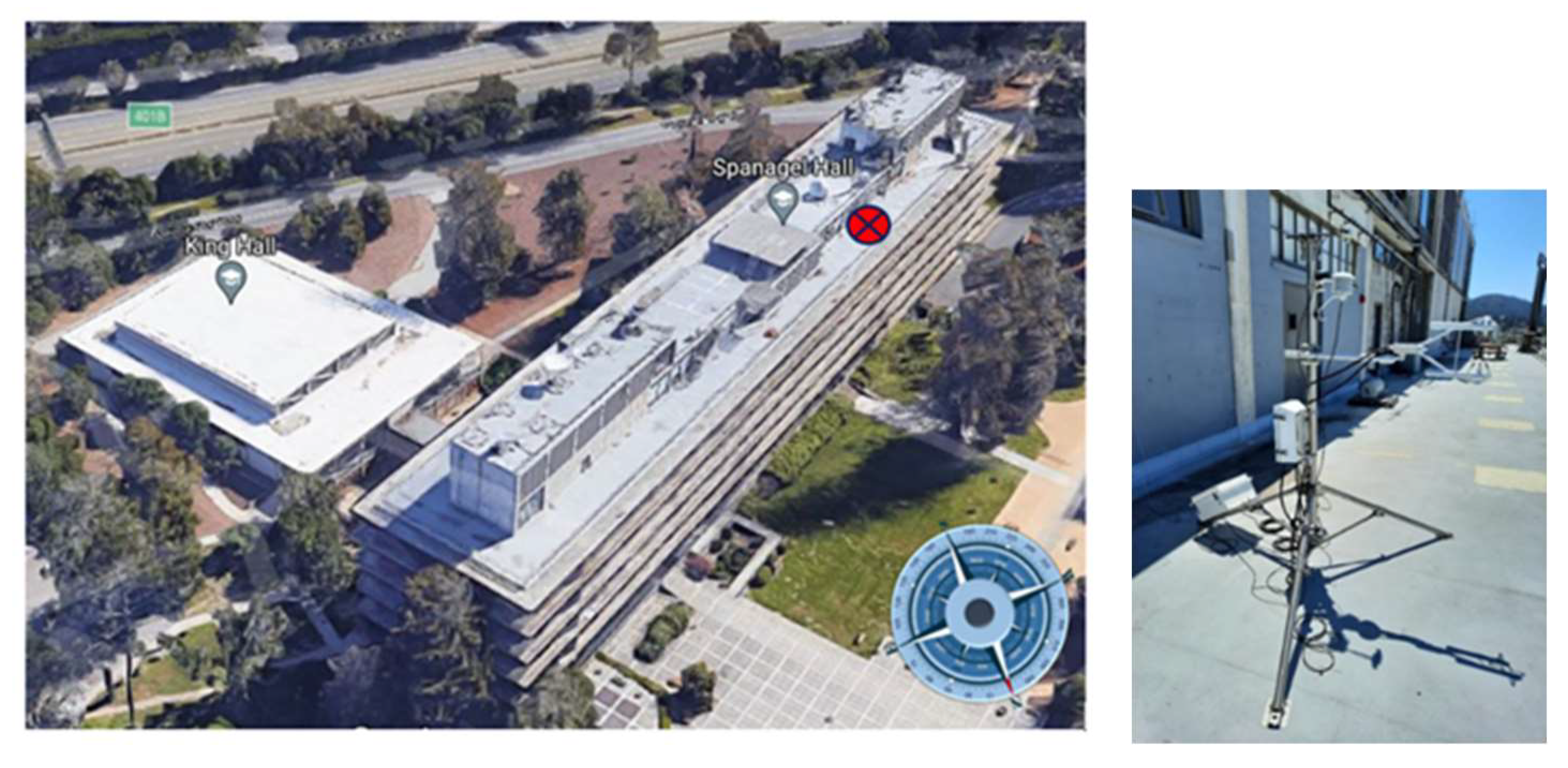
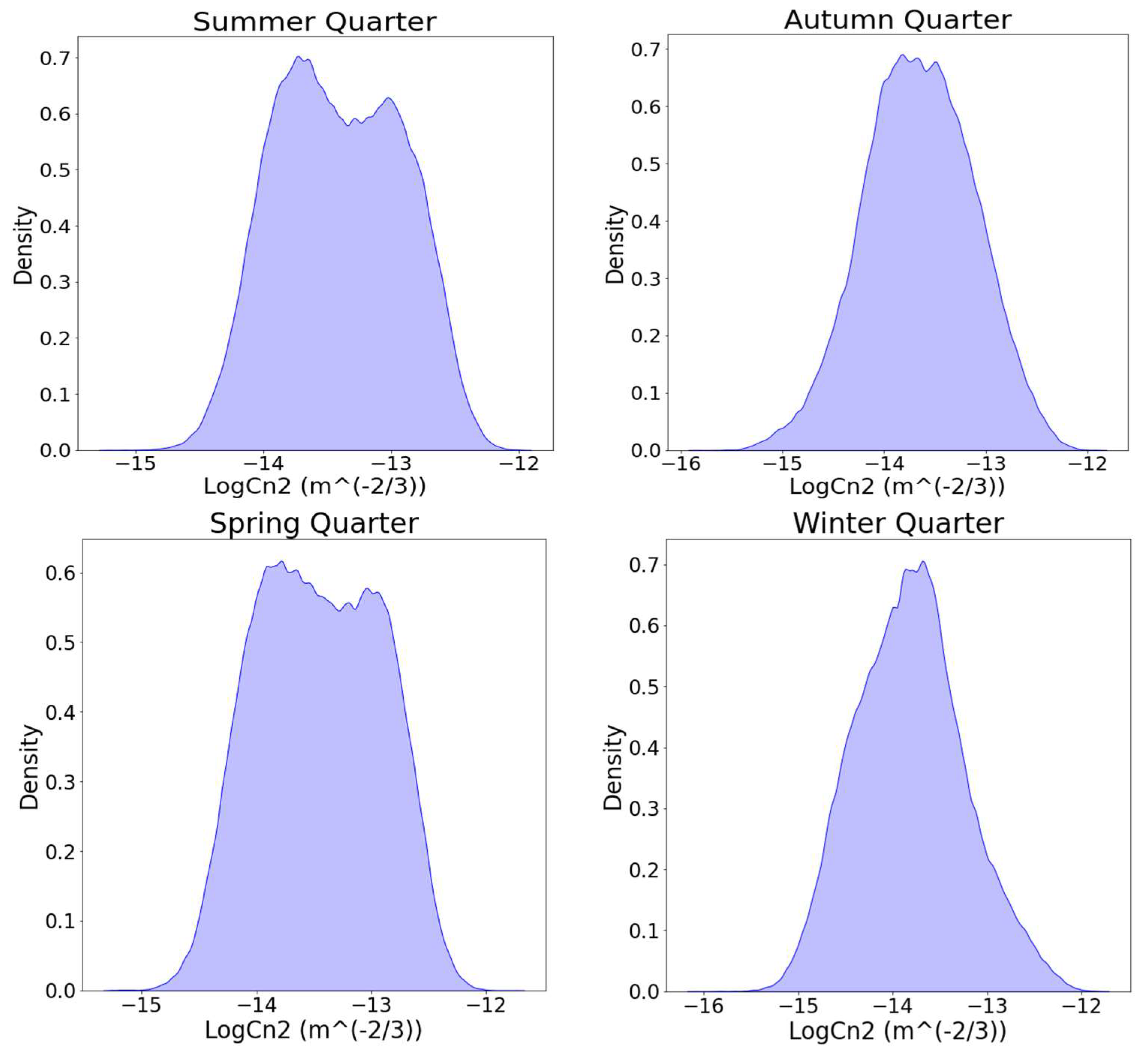
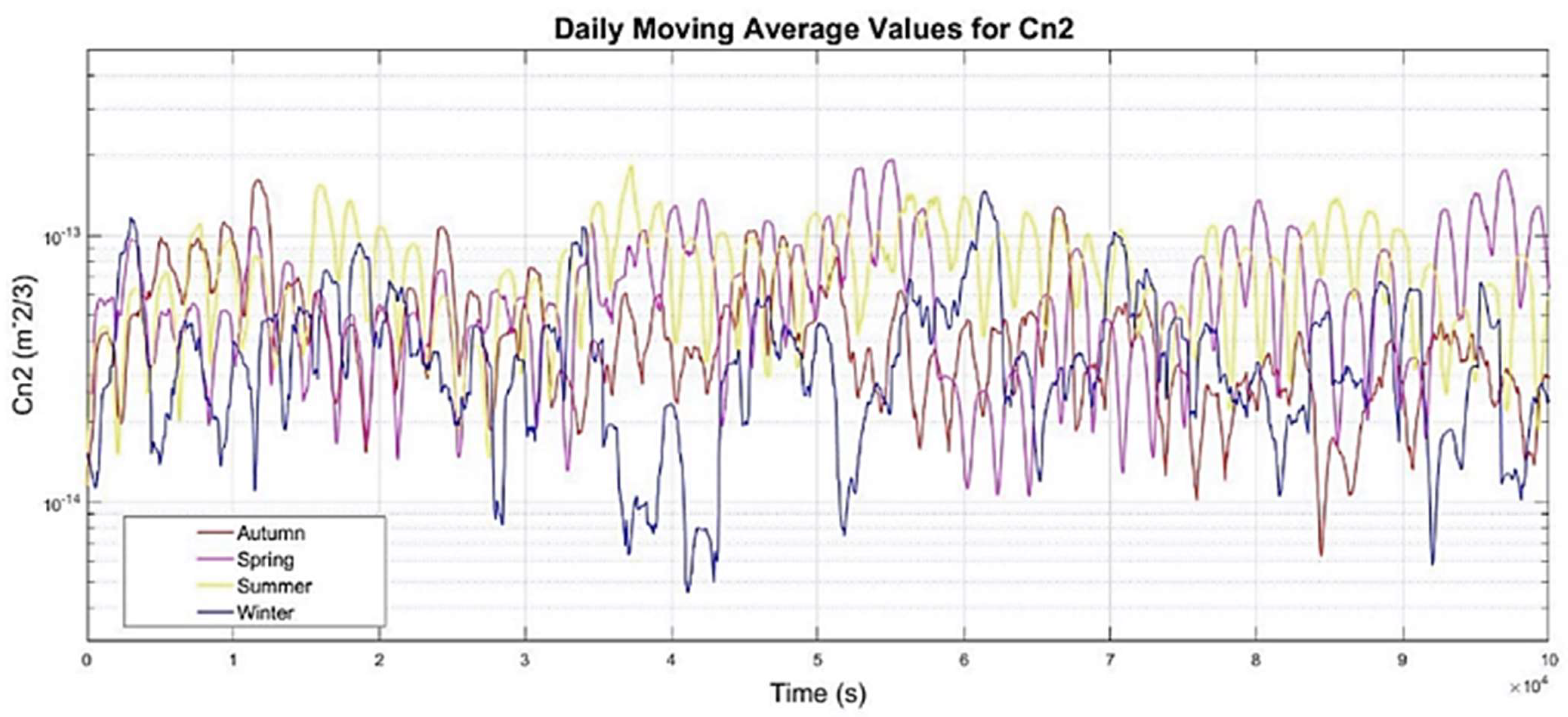

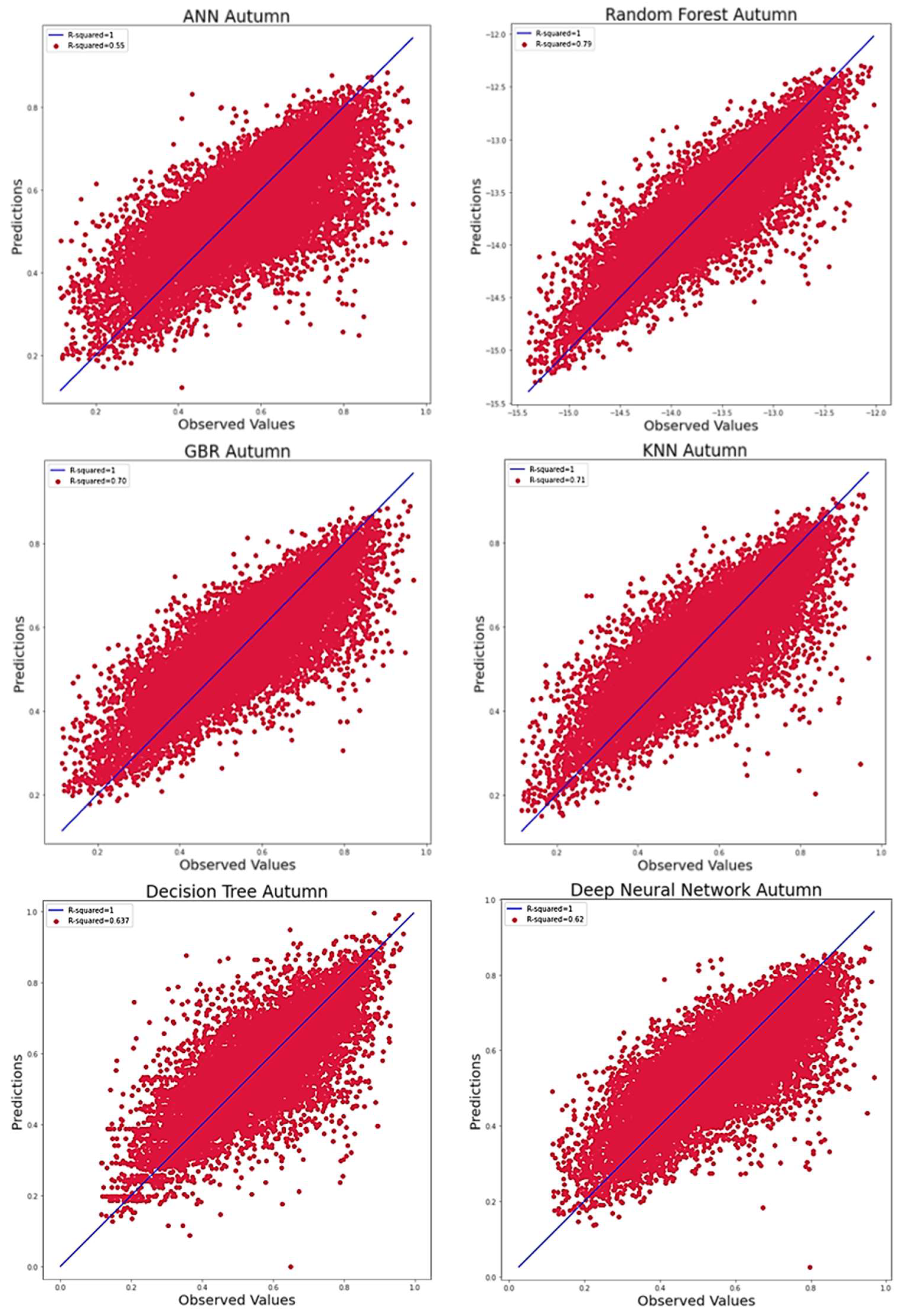
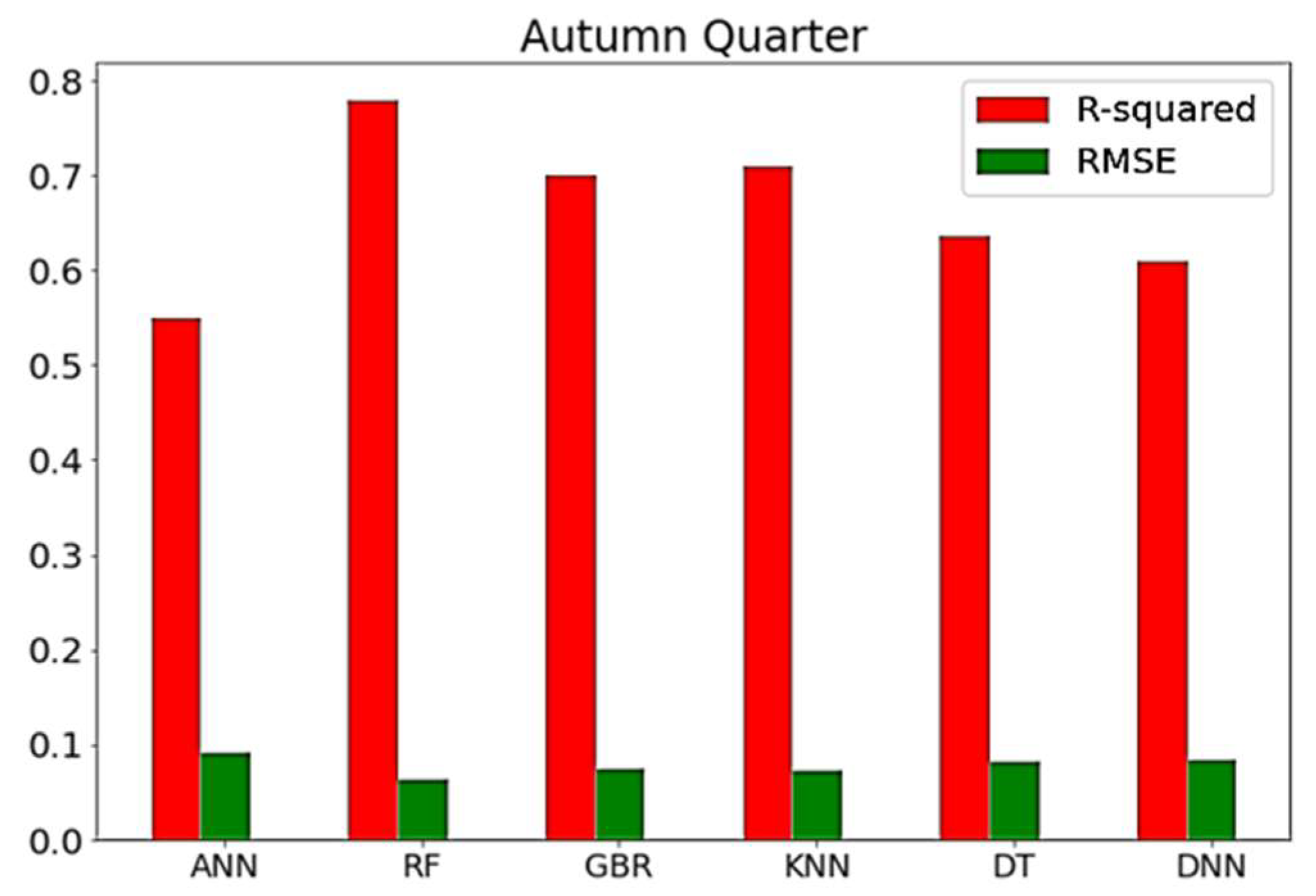

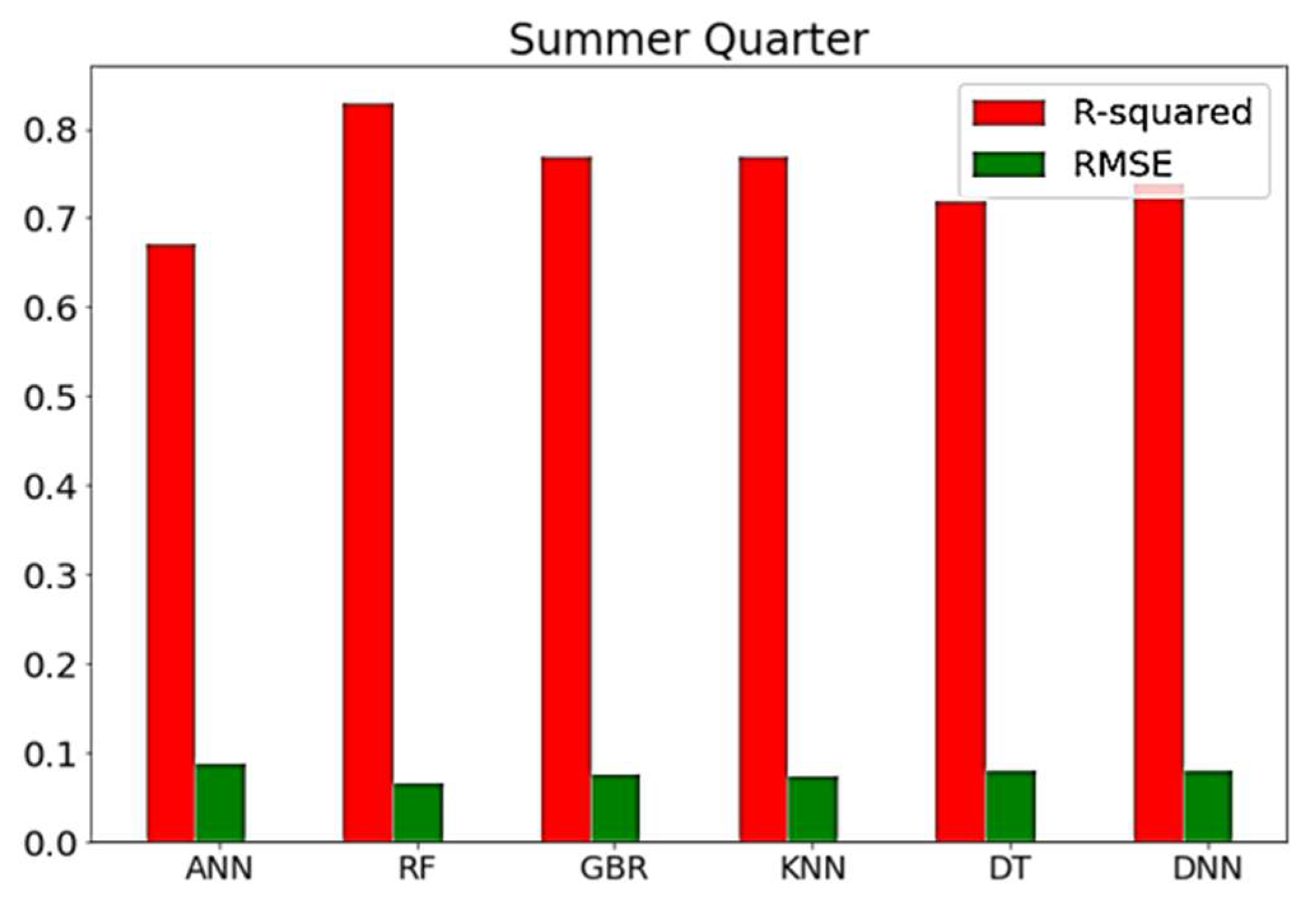
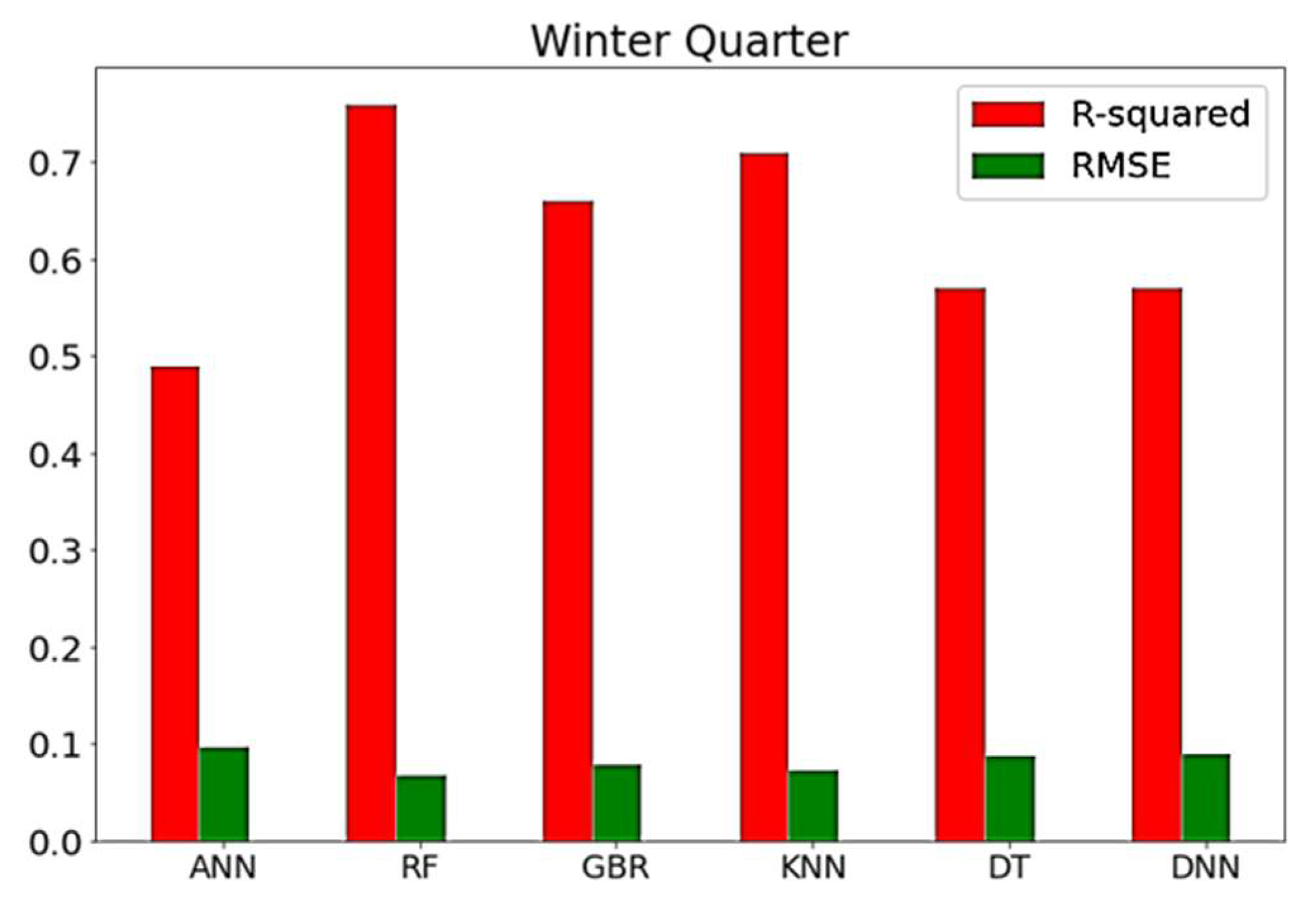
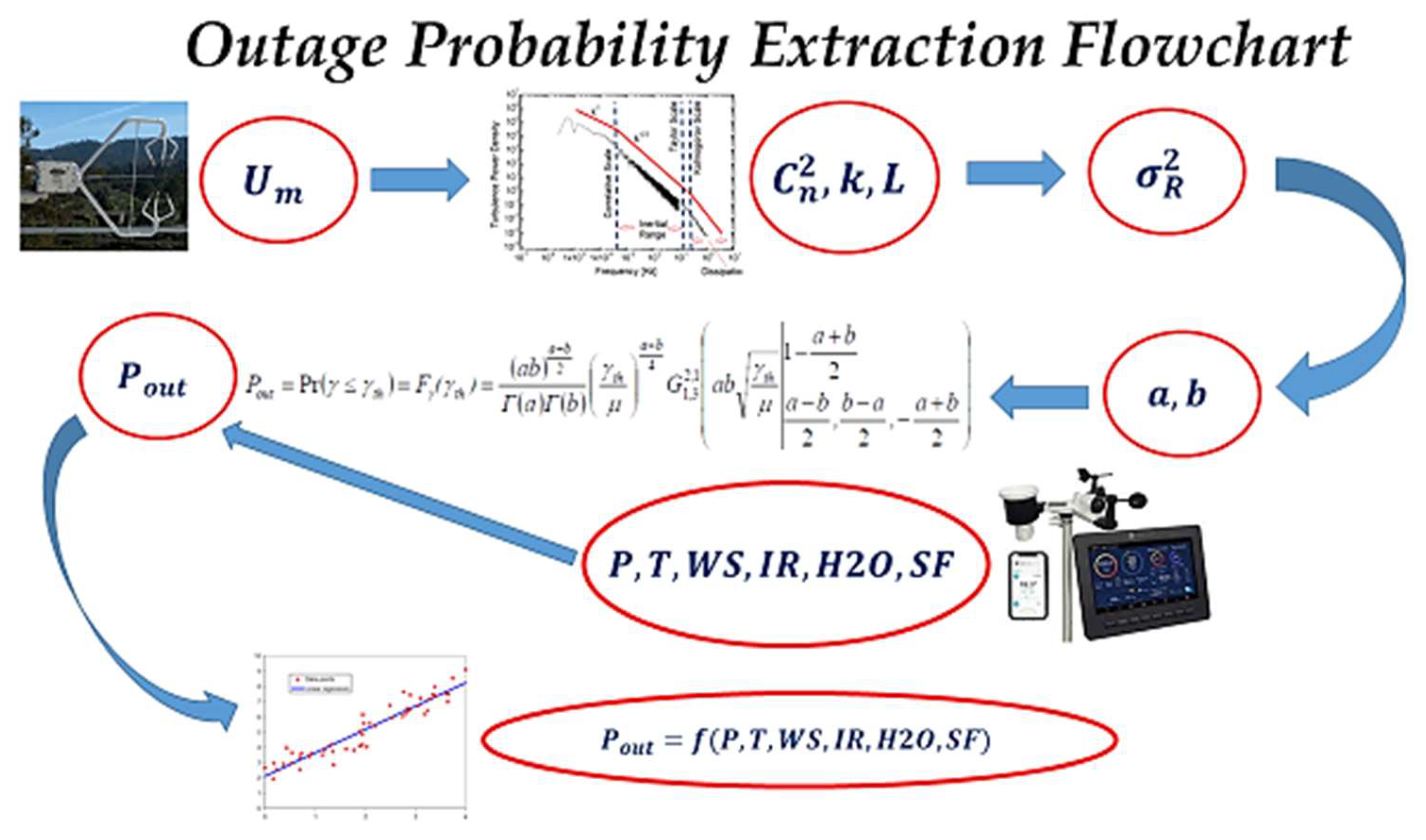
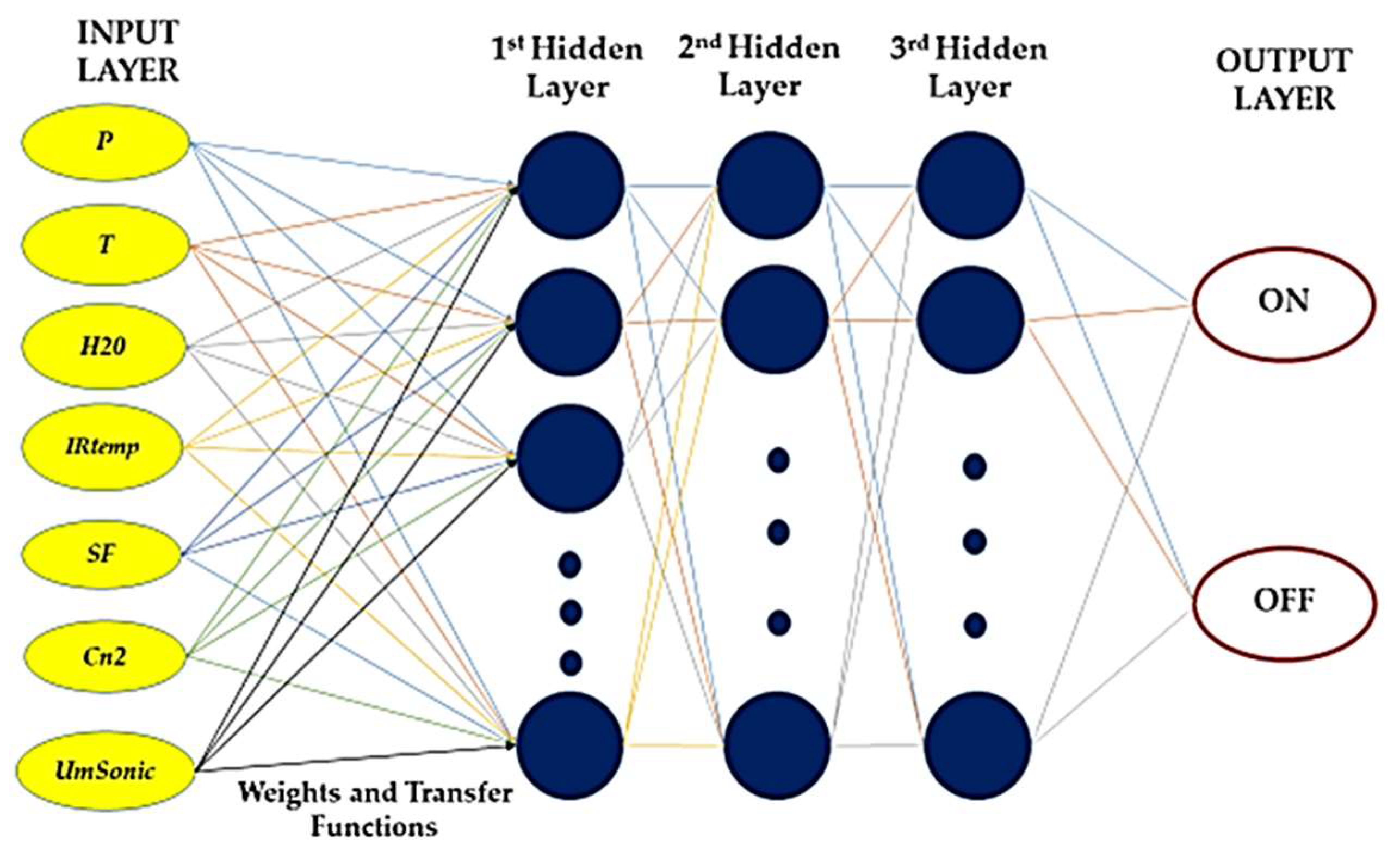
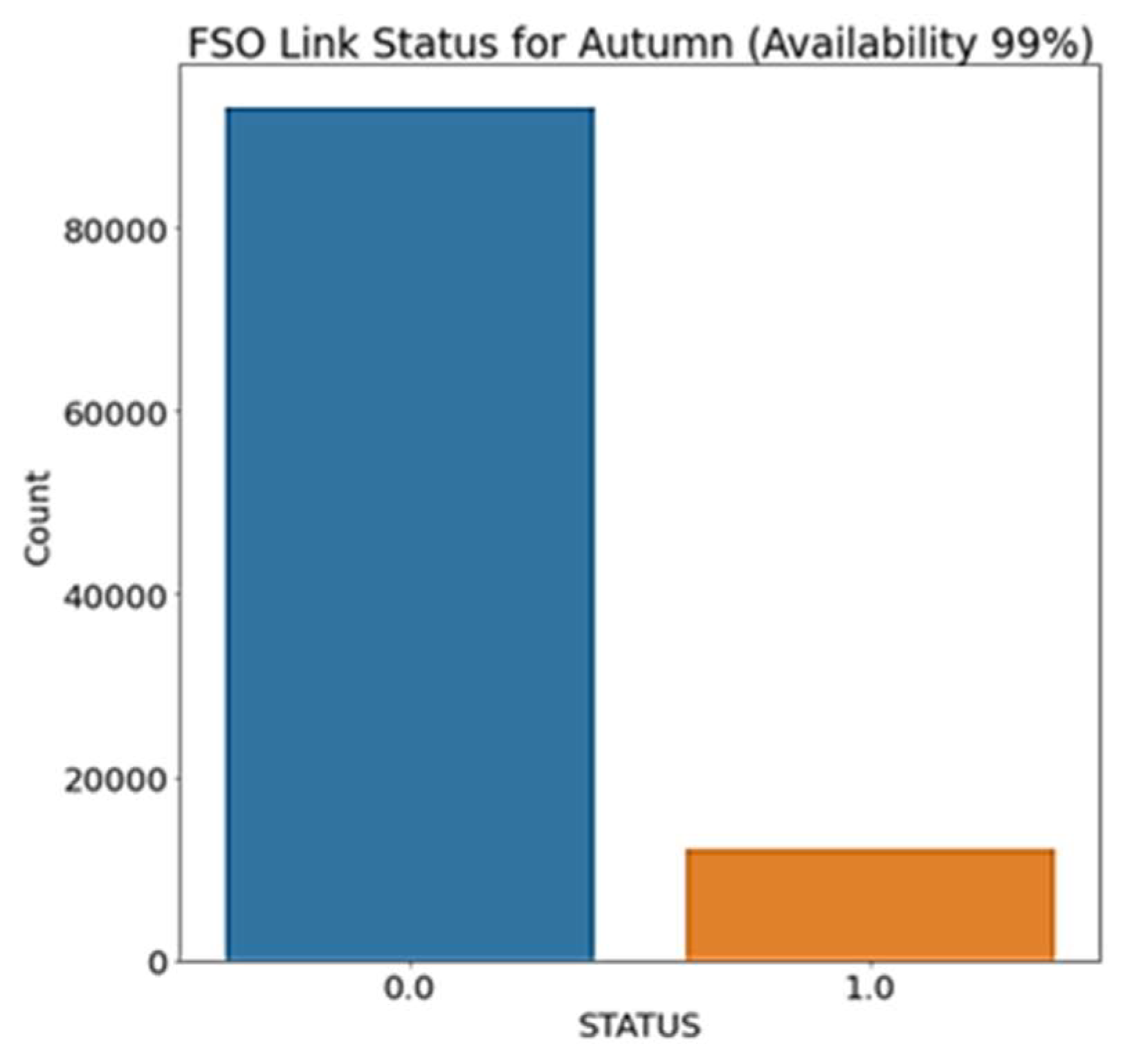
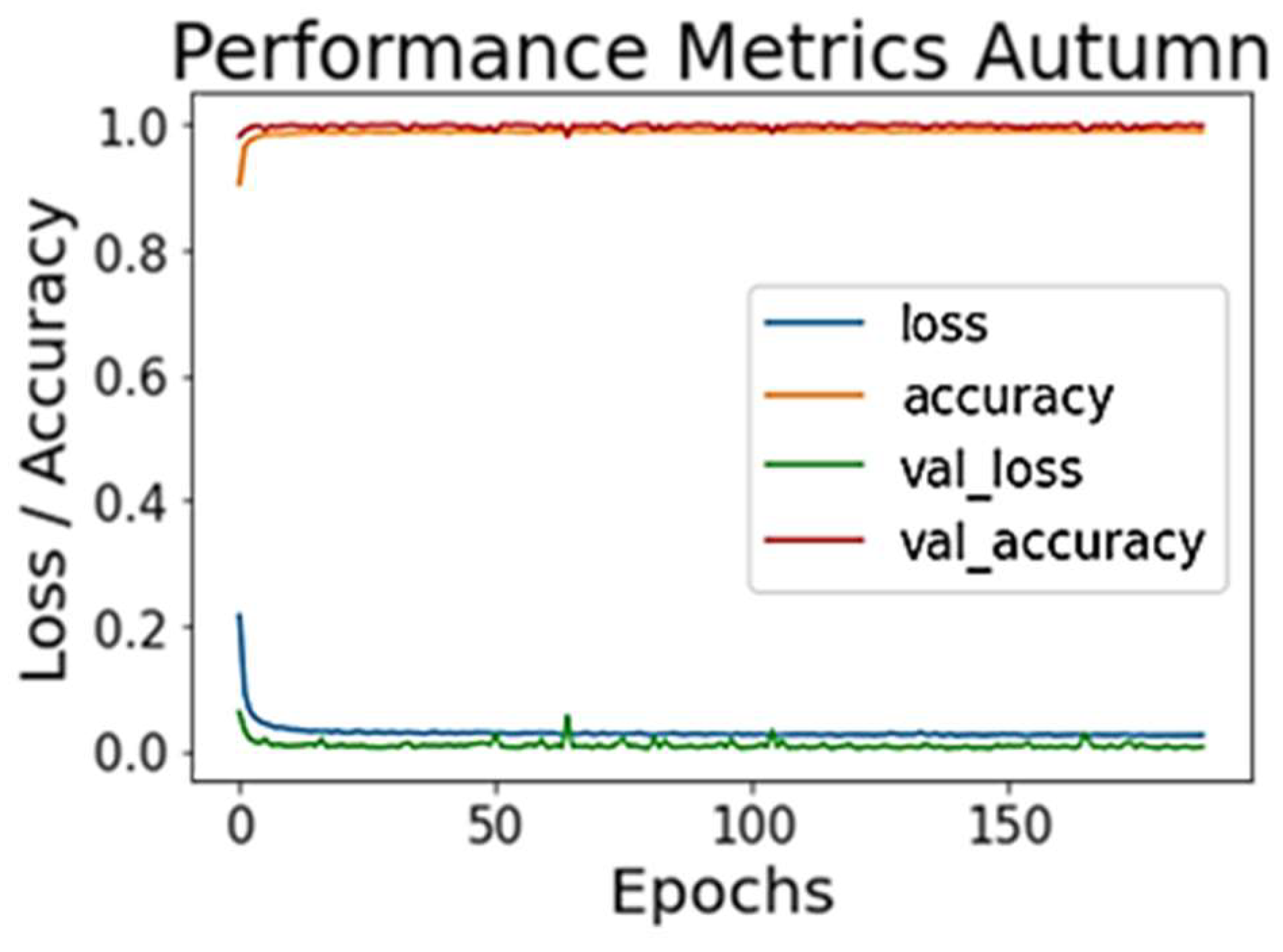
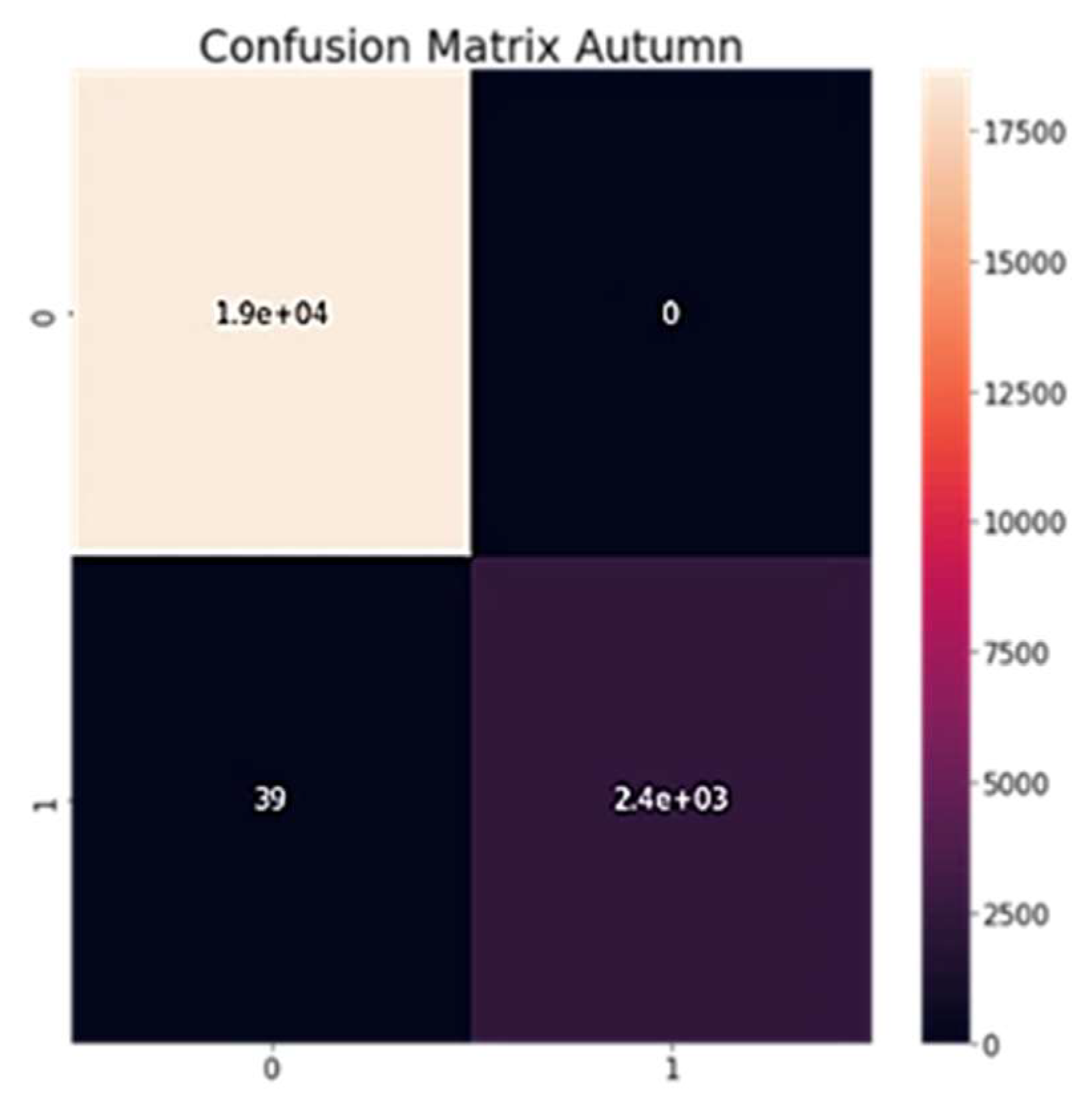

| Descriptive Metric | Winter | Spring | Summer | Autumn | Overall |
|---|---|---|---|---|---|
| Mean | 3.776 × 10−14 | 6.936 × 10−14 | 7.136 × 10−14 | 4.544 × 10−14 | 5.724 × 10−14 |
| Median | 1.501 × 10−14 | 3.382 × 10−14 | 3.729 × 10−14 | 2.187 × 10−14 | 2.542 × 10−14 |
| SD | 7.274 × 10−14 | 8.680 × 10−14 | 8.367 × 10−14 | 6.642 × 10−14 | 9.035 × 10−14 |
| Min | 8.062 × 10−17 | 5.480 × 10−16 | 6.071 × 10−16 | 1.432 × 10−16 | 8.062 × 10−17 |
| Max | 1.622 × 10−12 | 1.821 × 10−12 | 1.065 × 10−12 | 1.279 × 10−12 | 1.821 × 10−12 |
| Count | 129,721 | 159,109 | 130,628 | 105,325 | 524,783 |
| Descriptive Metric | Winter | Spring | Summer | Autumn |
|---|---|---|---|---|
| Min | 0.018 | 0.024 | 0.025 | 0.022 |
| Max | 0.04 | 0.04 | 0.04 | 0.04 |
Disclaimer/Publisher’s Note: The statements, opinions and data contained in all publications are solely those of the individual author(s) and contributor(s) and not of MDPI and/or the editor(s). MDPI and/or the editor(s) disclaim responsibility for any injury to people or property resulting from any ideas, methods, instructions or products referred to in the content. |
© 2023 by the authors. Licensee MDPI, Basel, Switzerland. This article is an open access article distributed under the terms and conditions of the Creative Commons Attribution (CC BY) license (https://creativecommons.org/licenses/by/4.0/).
Share and Cite
Lionis, A.; Sklavounos, A.; Stassinakis, A.; Cohn, K.; Tsigopoulos, A.; Peppas, K.; Aidinis, K.; Nistazakis, H. Experimental Machine Learning Approach for Optical Turbulence and FSO Outage Performance Modeling. Electronics 2023, 12, 506. https://doi.org/10.3390/electronics12030506
Lionis A, Sklavounos A, Stassinakis A, Cohn K, Tsigopoulos A, Peppas K, Aidinis K, Nistazakis H. Experimental Machine Learning Approach for Optical Turbulence and FSO Outage Performance Modeling. Electronics. 2023; 12(3):506. https://doi.org/10.3390/electronics12030506
Chicago/Turabian StyleLionis, Antonios, Antonios Sklavounos, Argyris Stassinakis, Keith Cohn, Andreas Tsigopoulos, Kostas Peppas, Konstantinos Aidinis, and Hector Nistazakis. 2023. "Experimental Machine Learning Approach for Optical Turbulence and FSO Outage Performance Modeling" Electronics 12, no. 3: 506. https://doi.org/10.3390/electronics12030506
APA StyleLionis, A., Sklavounos, A., Stassinakis, A., Cohn, K., Tsigopoulos, A., Peppas, K., Aidinis, K., & Nistazakis, H. (2023). Experimental Machine Learning Approach for Optical Turbulence and FSO Outage Performance Modeling. Electronics, 12(3), 506. https://doi.org/10.3390/electronics12030506








